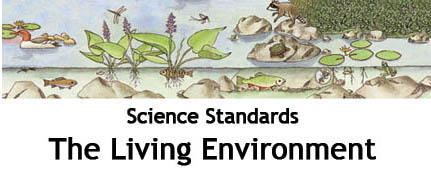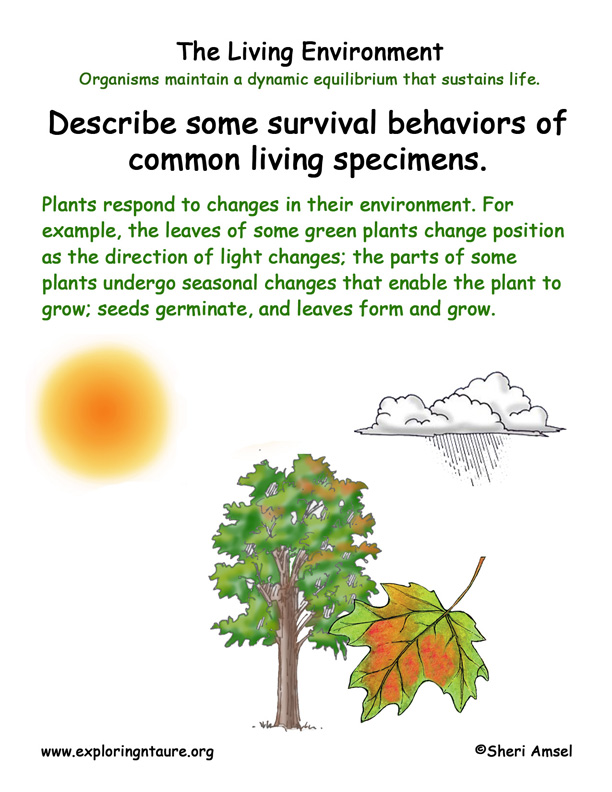

Students will understand and apply scientific concepts, principles, and theories pertaining to the physical setting and living environment and recognize the historical development of ideas in science.
Organisms maintain a dynamic equilibrium that sustains life.
“Students need many opportunities to observe a variety of organisms for the patterns of similarities and differences of the life functions used to sustain life. All organisms carry out basic life functions in order to sustain life. These life functions include growing, taking in nutrients, breathing, reproducing, and eliminating waste. Students need many opportunities to observe and compare these similarities and differences in a variety of organisms. Specimens that could provide these opportunities may include guppies, mealworms, and gerbils, as well as fish, insects, mammals, birds, amphibians, reptiles, plants, and fungi.” From the Elementary Science Core Curriculum Guidelines
Describe some survival behaviors of common living specimens.
5.2a Plants respond to changes in their environment. For example, the leaves of some green plants change position as the direction of light changes; the parts of some plants undergo seasonal changes that enable the plant to grow; seeds germinate, and leaves form and grow.

